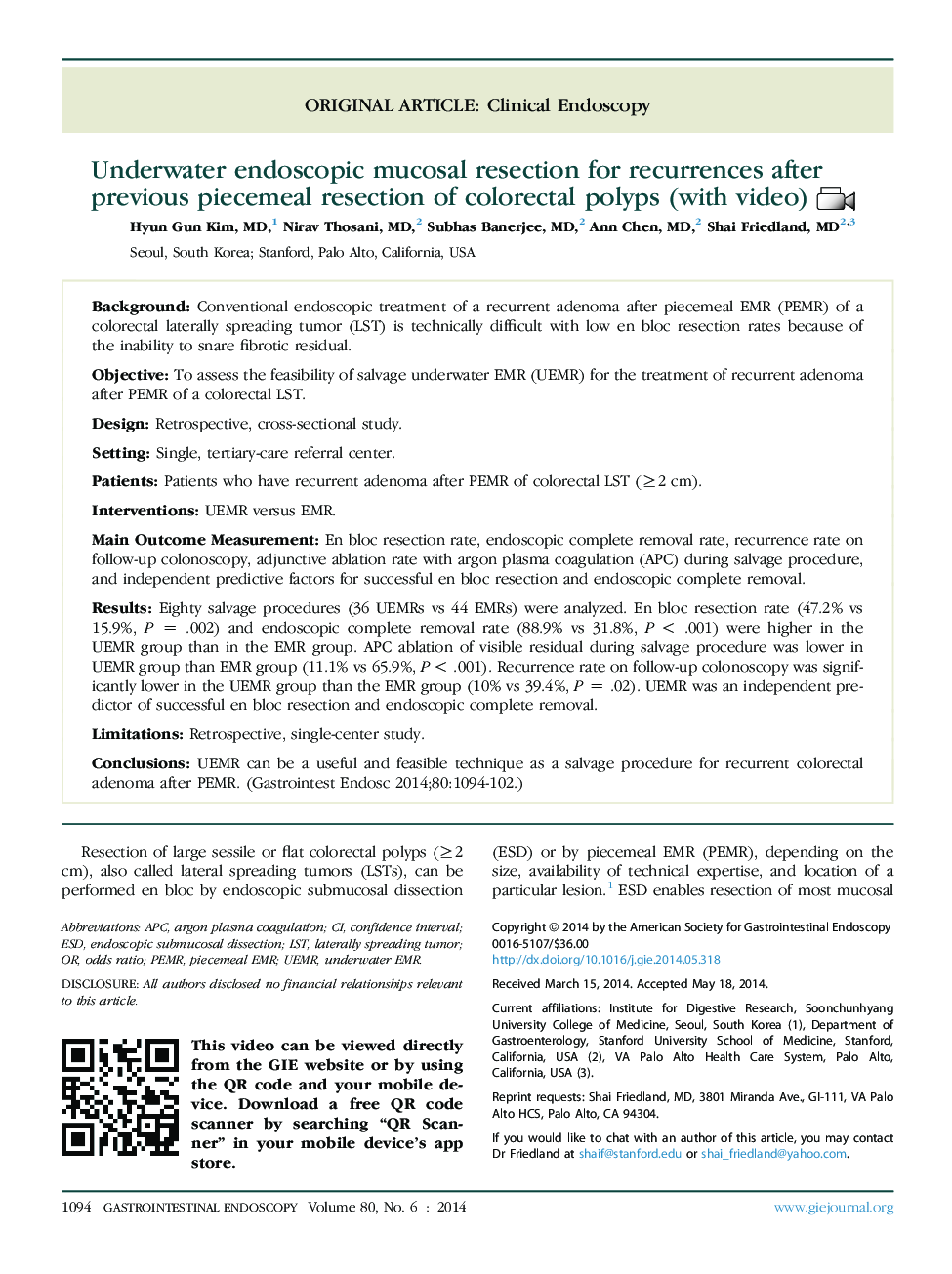| Article ID | Journal | Published Year | Pages | File Type |
|---|---|---|---|---|
| 3302707 | Gastrointestinal Endoscopy | 2014 | 9 Pages |
BackgroundConventional endoscopic treatment of a recurrent adenoma after piecemeal EMR (PEMR) of a colorectal laterally spreading tumor (LST) is technically difficult with low en bloc resection rates because of the inability to snare fibrotic residual.ObjectiveTo assess the feasibility of salvage underwater EMR (UEMR) for the treatment of recurrent adenoma after PEMR of a colorectal LST.DesignRetrospective, cross-sectional study.SettingSingle, tertiary-care referral center.PatientsPatients who have recurrent adenoma after PEMR of colorectal LST (≥2 cm).InterventionsUEMR versus EMR.Main Outcome MeasurementEn bloc resection rate, endoscopic complete removal rate, recurrence rate on follow-up colonoscopy, adjunctive ablation rate with argon plasma coagulation (APC) during salvage procedure, and independent predictive factors for successful en bloc resection and endoscopic complete removal.ResultsEighty salvage procedures (36 UEMRs vs 44 EMRs) were analyzed. En bloc resection rate (47.2% vs 15.9%, P = .002) and endoscopic complete removal rate (88.9% vs 31.8%, P < .001) were higher in the UEMR group than in the EMR group. APC ablation of visible residual during salvage procedure was lower in UEMR group than EMR group (11.1% vs 65.9%, P < .001). Recurrence rate on follow-up colonoscopy was significantly lower in the UEMR group than the EMR group (10% vs 39.4%, P = .02). UEMR was an independent predictor of successful en bloc resection and endoscopic complete removal.LimitationsRetrospective, single-center study.ConclusionsUEMR can be a useful and feasible technique as a salvage procedure for recurrent colorectal adenoma after PEMR.
